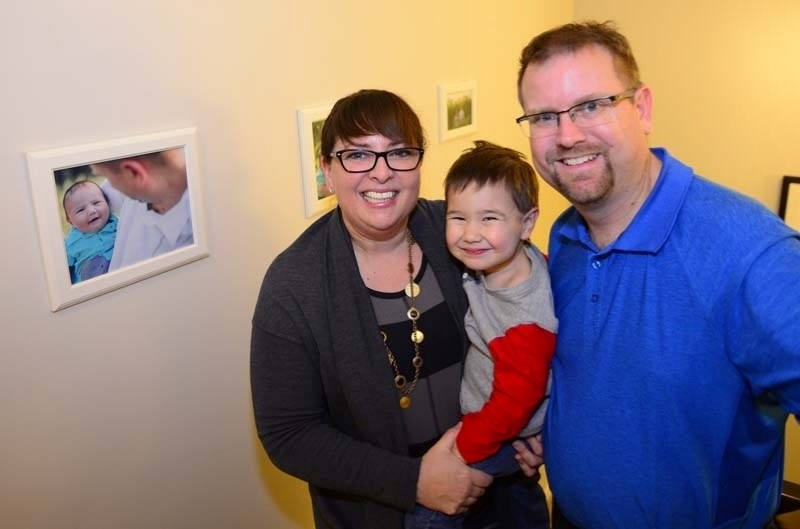While many enter parenthood the traditional way, the journey for others is an obstacle course lined with barricades like infertility, pregnancy complications, or the absence of a desired co-parent.
Adoption has long been promoted as the preferred method for individuals or couples who desire to become parents, though many families say emotional strength and preparedness are vital components to succeed.
Cochranites Trisha and Brent McPherson said their journey to parenthood was not for the faint of heart – but well worth the wait.
“He’s the best thing that ever happened to us,” Trisha said of the couple’s two-and-a-half-year old son Keegan, reminiscing about their struggles with fertility and miscarriages. “We were open to adoption right from the get-go.”
Following an eight-month application process, it took another two and a half years until the McPhersons held their Edmonton-born infant son in their arms.
While there appears to be many successful, happy endings with private adoptions, the wait list continues as fewer infants are put up for adoption.
“The last two years it’s really declined,” said Liz Gifford, program director for Alberta’s largest private adoption clinic, Adoption Options, said of the list of available children.
Gifford said when it comes to domestic adoption – the most affordable and popular route – the waiting period is between three and four years, “sometimes longer.”
Successful placements have fallen to as few as 40 per year in recent years from approximately 60 over the last decade. The agency’s waitlist now stands at 160 families.
It is difficult to pinpoint any singular reason for the decline, but it’s likely a combination of increased use of birth control, keeping babies in their communities or extended family units and increased societal acceptance, affordability and access to alternative measures – including abortion.
All private adoptions are open, although it is ultimately up to the adoptive parents to set those boundaries and determine the level of communication following placement.
According to Gifford, the nature of private adoption builds a bond between all parties.
Adoption Options has been practicing open adoption since 1985 and insists this method is “very healthy for everyone involved.”
Unlike public (government) adoptions, most private adoptions are with infants and much of the time the maternal history (including substance abuse) is better known because of a closer relationship with the birth mother.
Through private adoption, the birth mother has 10 days following placement of her infant with the adoptive family to have what is called a “change of heart.” Trisha remembers the weight lifted off her and her husband’s chests at midnight on Day 10 – especially considering Keegan’s birth mother had a change of heart on day five, although it turned out to be a false alarm.
“All she needed was reassurance that he was OK and that we were prepared to have a relationship with her,” explained Trisha, reflecting on how stressful it felt at the time, but how she empathized with her son’s birth mother.
She and Brent make a conscientious effort to stay in touch with Keegan’s birth mother, sending her photos and keeping the lines of communication open.
“Once you have that child, you crave that relationship for (him),” said Trisha, adding the couple are now back on the list and hopeful they will soon be parents of two children.
Brent cautions those looking to adopt to make sure the marriage bond is strong.
“There’s one key element: emotional endurance – because you’re going to have your ups and downs,” said Brent. “You need each other but the individual stresses affect you differently.”
According to Zoe Cooper, assistant director of communications for Alberta Human Services, while infancy adoption numbers through private agencies continues, the number of children in government care since 2008/2009 has only “decreased slightly” but “the number of private guardianships has increased.”
Private guardianship is defined as “an alternative to adoption as a permanency option for children” and is an application made to the court for an order with respect to a child in the permanent care of the ministry.
Cooper said as of June 2016, there were 5,023 children in permanent government care, but not all of these children are assessed as eligible for adoption or private guardianship.
There are around 130 children referred for adoption matching at any given time, though matches are not always found as some of the children have significant special needs.



